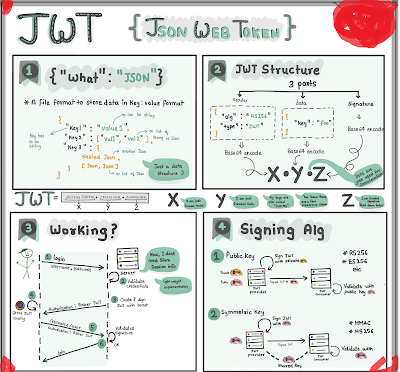A JSON Web Token (JWT) is a way to securely transmit information between two parties, like a server and a client. Here’s how it works in simple terms:
 |
JWT |
Structure: A JWT is made up of three parts: a header, a payload, and a signature. These parts are separated by dots (.).
Header: This contains information about how the token is created, like the type of token (JWT) and the signing algorithm used (like HMAC or RSA).
Payload: This part holds the actual data or claims. Claims are pieces of information, such as the user’s ID or permissions. This is where you find the data you want to share.
Signature: To ensure the token hasn’t been tampered with, the server creates a signature by taking the header and payload, and signing them with a secret key.
Creating the Token: When a user logs in, the server creates a JWT by combining these three parts and signing it. The token is then sent back to the user.
Using the Token: Whenever the user wants to access protected resources (like an API), they send the JWT along with their request. The server checks the token to make sure it’s valid and hasn’t been altered.
Benefits:
- Stateless: The server doesn’t need to keep track of sessions, as all the information is stored in the token itself.
- Compact: JWTs are small and can be easily sent in URLs, headers, or cookies.
- Secure: With proper signing and encryption, they can be made secure against tampering and eavesdropping.


No comments:
Post a Comment